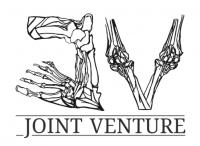Difference between revisions of "Joint Venture 2019"
Techsensus (talk | contribs) |
Techsensus (talk | contribs) |
||
| Line 1: | Line 1: | ||
| − | [[File: | + | [[File:Jointventure.PNG|200px|thumb|right|Logo of Team Joint Venture]] |
Revision as of 12:52, 5 September 2020
Contents
Joint Venture 2019
Joint Venture is a team competing in Sensus 2019, its university is the Imperial College London. For Sensus 2019, Joint Venture investigated the possibilities for creating a biosensor which is able to measure the concentration of Adalimumab. The full TRD can be found via this link
Method
Magnetic Microparticle Centrifugation
Molecular Recognition
Our point-of-care system makes use of a magnetic microparticle centrifugation technique coupled with the characteristic bright red colour of AuNPs1 2to give an optical readout proportional to the concentration of ADL in thepatient’s plasma.
Physical Transduction
A blood plasma sample with a high concentration of ADL will give the strongest coloured solution. Conversely, a blood plasma sample with a much lower concentration of ADL will give a near colourless supernatant. The intensity of the coloured solution is measured using a spectrophotometer.
Cartridge
In order to minimise our environmental impact, oursensor has been designed to rely on modified clearacrylic slides, as can be seen in Appendix II. Thes eare easily produced at low cost with a minimal envi-ronmental impact caused by mass development.
Reader Instrument
Our biosensor’s screen is the main communication point for the patient, with our app ADA acting as a tool to use alongside for tracking and management. There is a large, easy to use touch screen, housed in a sensor 20 by 14 by 10 cm in size.
